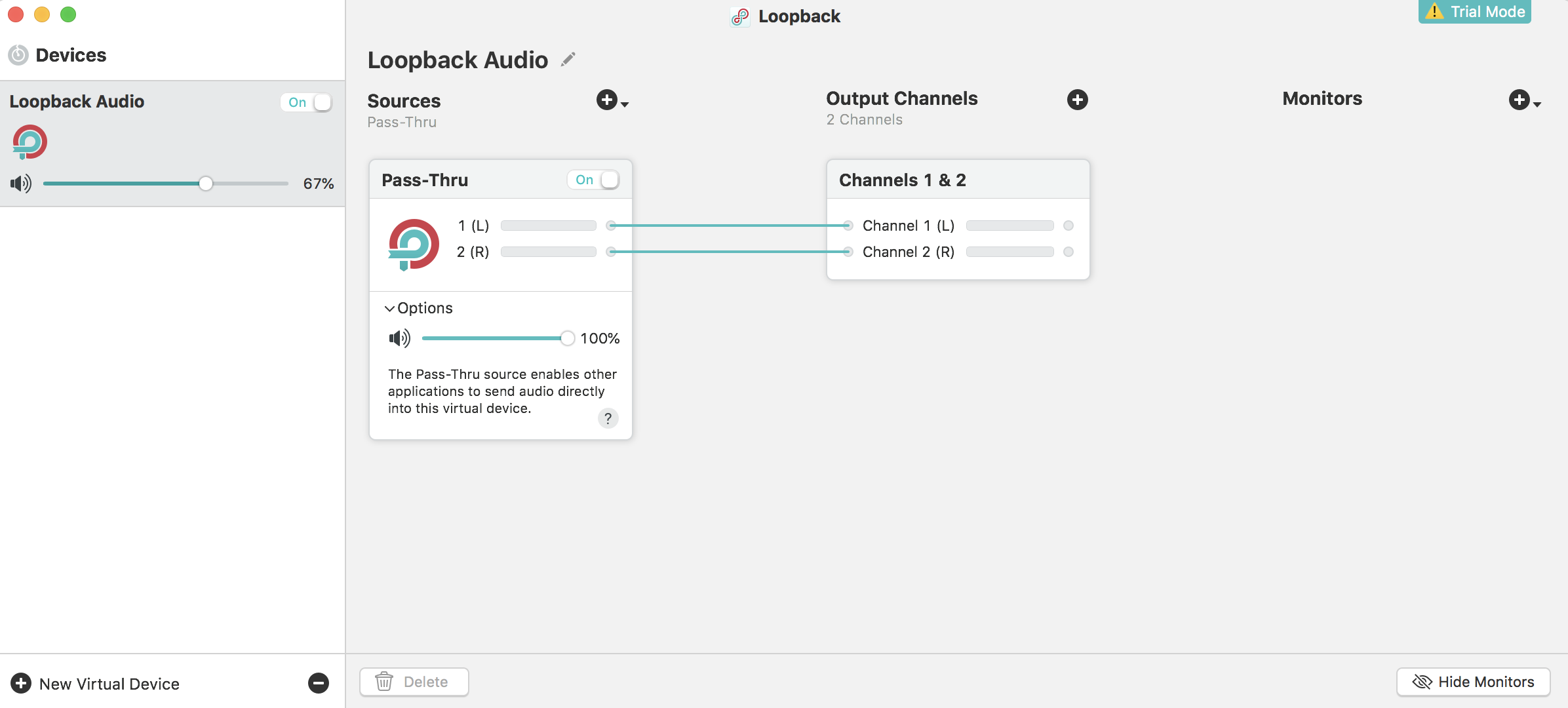

Available System-Wide - Your Mac will show Loopback's virtual devices exactly like physical devices.Just add the applications and physical audio devices you want to include to the Audio Sources table to get started. Combine Audio Sources - Configuring a virtual audio device from multiple sources is easy.Now listeners can tune in to a live stream of your podcast as you record it! Route Audio For Broadcasts - Set a simple (pass-thru) device as the output at the end of an Audio Hijack chain, and then as the input source in Nicecast.

Create a virtual device that grabs just the mic and the app’s audio to get exactly the audio you want. Some allow recording of system audio instead, but neither option is ideal. Create Top-Notch Screencasts - Screen recorders, including QuickTime Player, allow you to include your mic's audio.With Loopback, you can combine multiple input devices into one virtual device for easy recording. Thankfully, they offer recording from many channels. Combine Hardware Devices - Apps like GarageBand, Logic, and Ableton Live only record from a single audio device at once.If you're using a device like Elgato's Game Capture hardware and you want to record both your microphone and the game's audio at once, Loopback can assist! Record Gameplay Videos - Making gameplay videos with great audio can often be very difficult.Presto! Your guests all hear both your voice and your audio add-ons. Play Audio to All Your Podcast Guests - Combine your mic with audio sources like iTunes or QuickTime Player, then select your Loopback device as your source in Skype.Loopback gives you the power of a high-end studio mixing board, right inside your computer! Create virtual audio devices to take the sound from applications and audio input devices, then send it to audio processing applications.
#Loopback audio mac for free#
Their transcription feature can be used for free upload a video or audio file, and within a few minutes, you can read or download the transcribed text.Loopback makes it easy to pass audio between applications on your Mac. I tested the same files on Welder that I used with Dictation, and Welder was better about adding punctuation and separating multi-person interviews. Pop over to QuickTime Player, and play your audio or video file, and watch as the words are transcribed as if by magic!Īlternative: Welder (or other online services)Īs an alternative, you could use an online upload-to-transcribe service like Welder. Then go back to TextEdit, and in a new document, activate Dictation using your configured shortcut (e.g.

In there, choose the new 'Transcription Device' sound input: Quit Loopback (the device will still be present on the system after quitting), then go back to the Dictation settings in System Preferences. Delete the default Pass-thru source, and add in Quicktime Player as a new source: If you have Rogue Amoeba's Loopback, you can also use it to route the audio signal internally, so you don't have to have audio playing out through the speakers.Īfter you have Loopback installed and running, create a new device called 'Transcription Device'. Bonus: Routing audio internally on the Mac with Loopback The mic should pick up the audio and start transcribing live into the open document. press the dictation key), then start playing back your audio file through your Mac's speakers. Make sure you have your Mac's microphone selected, then open up TextEdit and create a new document:Īctivate the dictation shortcut (e.g. You'll use that to activate dictation later. 'press dictation key' or 'press control twice'. Turn on Dictation, and when prompted, accept the terms for Apple's Dictation service. These instructions were last updated for macOS Monterey 12.4.įirst, open up System Preferences, go to Keyboard, then the 'Dictation' tab: You can use the Dictation feature built into your Mac to transcribe audio files, and in my experience, it's been about 98-99% accurate, so it saves a lot of time if you want to index your audio files, or you need a transcript for some other purpose.


 0 kommentar(er)
0 kommentar(er)
